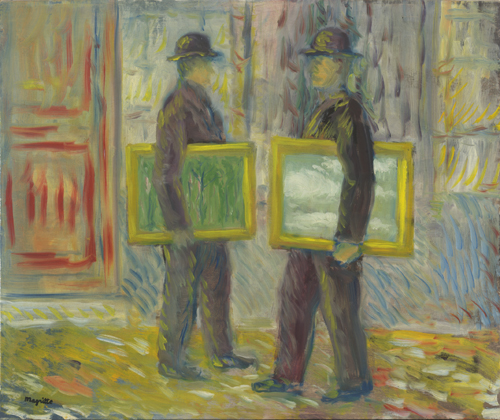View the study sheet here. Watch the recording here.

Such a lovely, fun holiday starts this week. The lighting of candles. The eating of rich, indulgent foods like potato latkes and sufganiyot. Little bags filled with chocolate coins wrapped in gold foil. Games to play, dreidels to spin. And a proud, heroic story to tell of resistance to a mighty empire and of the battle for freedom of religion. And of a miracle, oil lasting eight days rather than one. A miracle which we honor with the lighting of candles for eight days. A story we find in the Talmud.
Except underlying that story is another, written more than five hundred years earlier. It makes no mention of a miracle, of oil lasting eight days, though it certainly heroizes the military success of the Maccabees. And that story layers over another, one written not in Hebrew but in Greek. Its emphasis shifts from military glory to religious celebration. Eight days are celebrated there too, but it seems as a compensation for the failure to observe the festival of Sukkot due to wartime conditions.
Layers of stories. One in Aramaic. One in Hebrew. One in Greek. Each with its own foreground, its own background. Each with its own explanation – or not – of why we celebrate for eight days. Built on top of one another, they each urge upon us their own claim to what happened. And what we should celebrate.
Archaeology describes a tell as a topographical feature, a mound consisting of the accumulated succession of consecutive settlements at the same site. Chanukah is a narrative tell. Each generation built on top of the same celebratory event a different structure, used different materials and finishes in order to dwell meaningfully in its own time. But can faith endure with such ongoing reconstruction of its foundations?
This week’s Torah portion, Vayeshev, opens with a word expressing the human longing to have resolution, clarity and peace in one’s life: Jacob “settled.” Torah proceeds to subvert that desire by describing Jacob’s life as full of rendings: rivalry among his sons; the sale of Joseph into slavery by his brothers; the conspiracy among the brothers to tell their father that Joseph had been torn apart by a wild beast; the failure of son Judah to fulfill his familial obligations to his daughter-in-law; Joseph’s rise within an Egyptian household to a position of honor followed by his rapid descent into prison.
A story which opened on a note of high expectations ends with a father in mourning and a son languishing forgotten in the depths of imprisonment. The Hasidic commentary Mei HaShiloach discloses for us Torah’s intent here. It is not to mock our desire for peace, but to teach us that the enduring settlement we seek is gained by living through a story and its fractured plotline. When certainties are torn apart, the possibilities for human action open up. And that, Mei HaShiloach writes, is what God wants: to emerge from fear, from the desire for complete clarity, and to act in the courageous ways of love.
Rene Magritte was a Belgian surrealist artist. His paintings of familiar objects in unfamiliar, unexpected contexts provoked questions about the nature and boundaries of reality and representation. These pieces were influenced by the work of Freud and his exploration of the unconscious and by a critique of the self-satisfied aspirations of the middle class, often portrayed by men wearing bowler hats. By the mid-1940’s he radically shifted his style of painting. The upheaval of World War II provoked him to turn away from the orthodoxy of Surrealism. His palette and style explored the hazy, soft expressions of Renoir the Impressionist.
Presented here is his work La Cinquieme Saison. Two bowler-hatted artists approach one another. Or is it the same artist coming into engagement with himself? Each figure is carrying a painting. One clearly seems to be in the style of an Impressionist painting . The other could also be Impressionist in style. Or, with clouds as the subject, it might serve as a reference to Freud’s study of dreams and the unconscious. In which case it is a work evocative of Magritte’s earlier surrealist works. Perhaps they constitute layers of Magritte’s story-telling, layers that are either passing or about to bump into each other.
This year researchers at the Royal Museums of Fine Arts of Belgium in Brussels discovered through the use of infrared reflectography the portrait of a woman hidden under the image La Cinquieme Saison. So far, scholars are unsure who the woman is. His wife Georgette perhaps? Why did he paint over it? In any case, the clarity of what the canvass presents to us has now been complicated. Of course, such ambiguation has always been a central element of Magritte’s work: to provoke a gap between what we see and what we otherwise sense. Magritte’s disturbances are designed to help us know ourselves and our world more richly.
Torah is not a canvass of simple faith. It presents a sacred vista that is complex, conflicting, and layered. Every point along the way holds multiple possibilities. We search not for the only understanding but for that which develops us as the blessing we can be in this moment.
Light the candles this year. Place your Chanukiah in the window. The story it represents may not be exactly the same as another’s, but its glow is incandescent: We each have the ability to transform darkness to light in the world.
Join us here at 7:00 p.m. (PT) Thursday December 7 as we explore the bewildering of serene faith.









